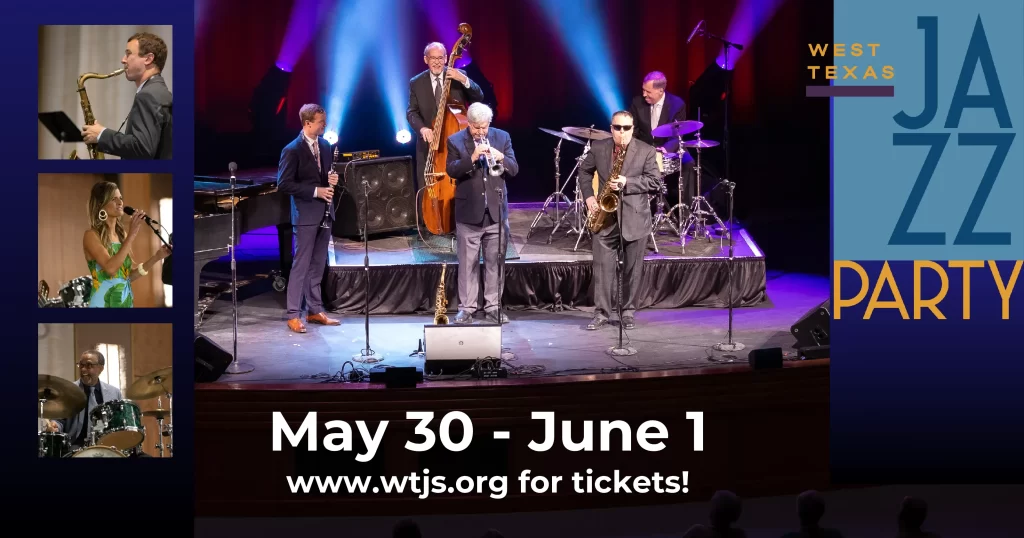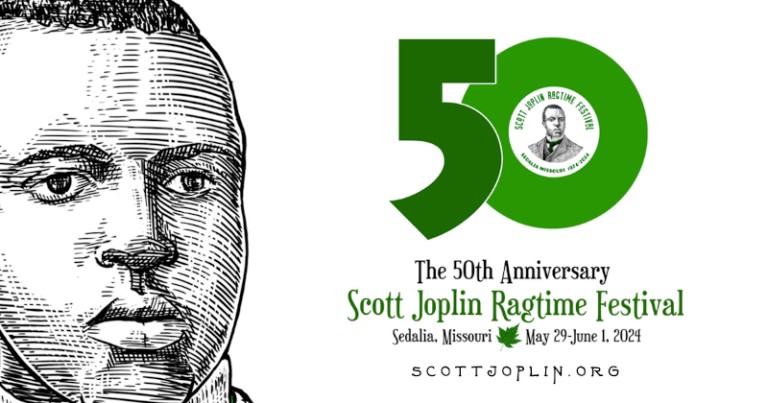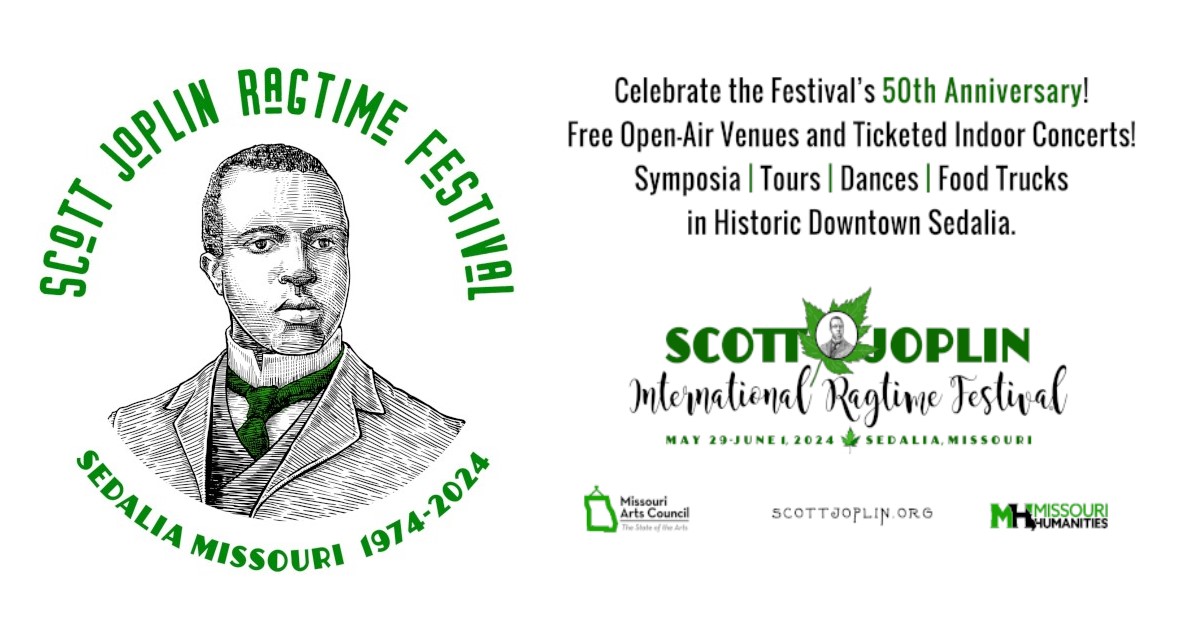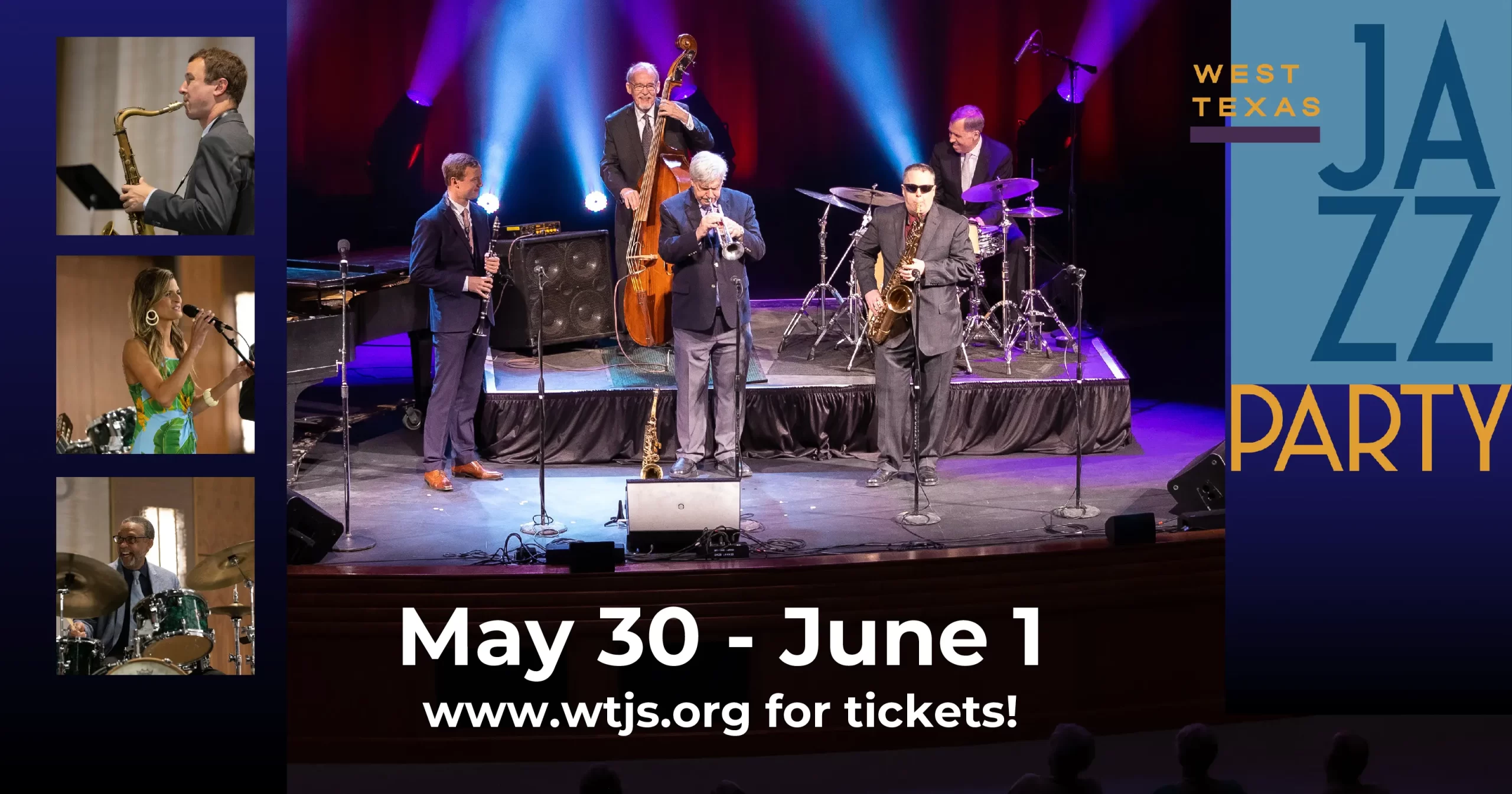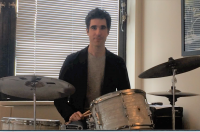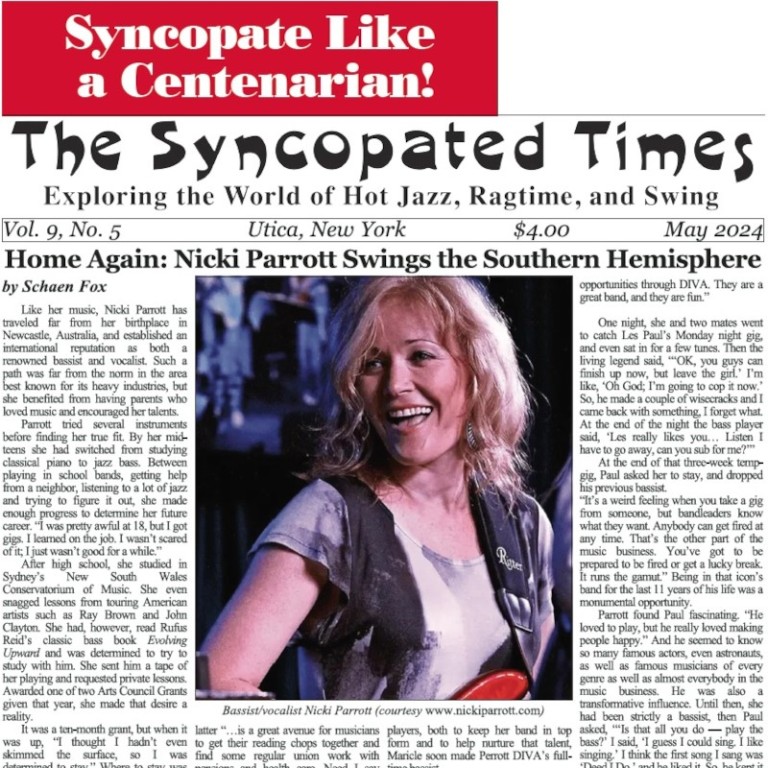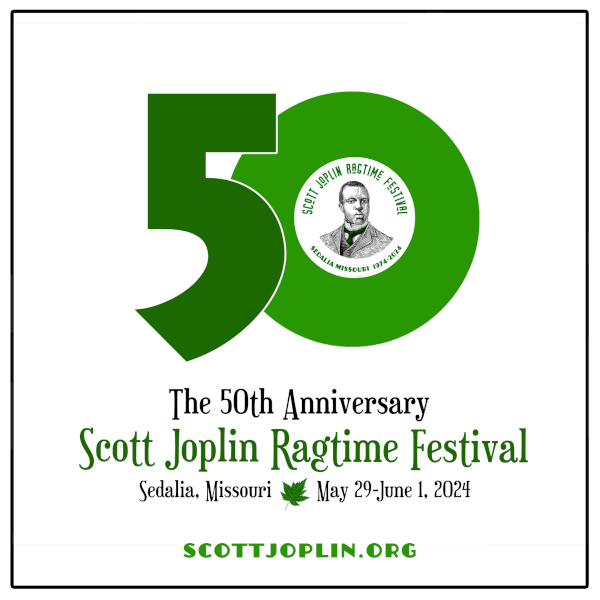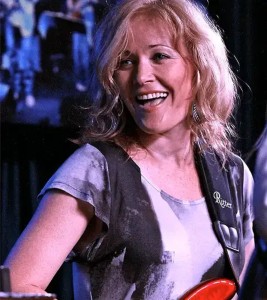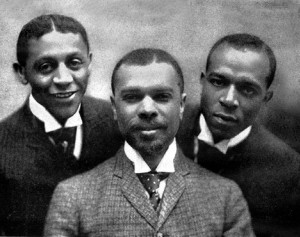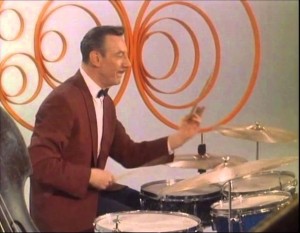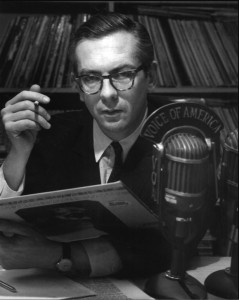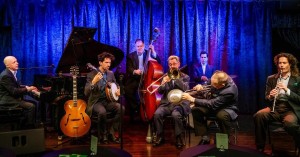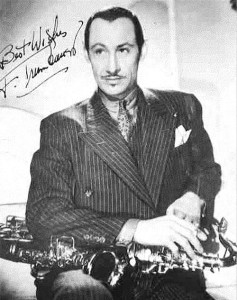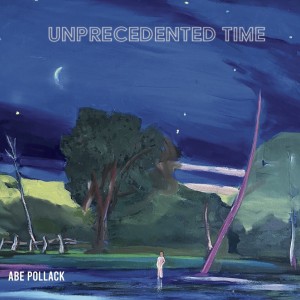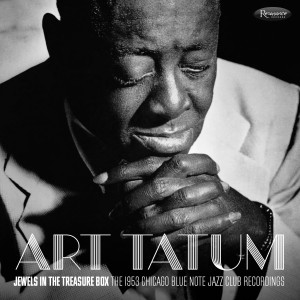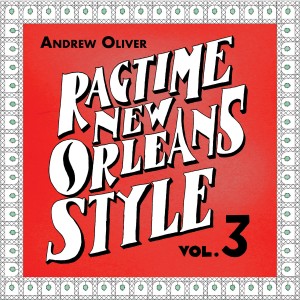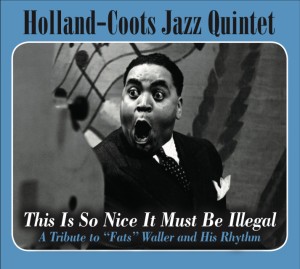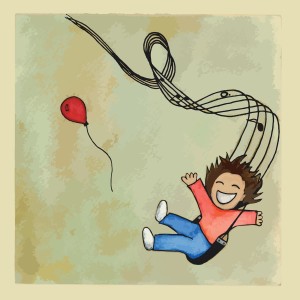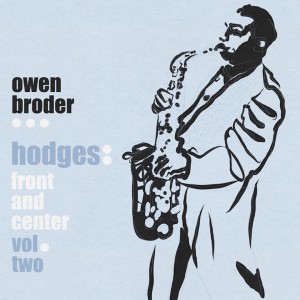Hal Smith: Brother Kevin, we have received quite a lot of positive comments for our first article on Morey Feld. Before we begin part two, I need to make a correction: Last time I wrote that he played cymbal crashes on “4” but I meant to say on “1” (the downbeat). In the wrong hands, that is like applying the brakes too quickly. It’s just another “broken rule” like the cross-stick on the snare drum, but it sounds all right when Morey played it!
We mentioned that this current article will address the films in which Morey Feld can clearly be seen playing drums. While there are bits and pieces of “Sweet And Low-Down” (1944, featuring Benny Goodman’s Orchestra and Quartet) online, there is very little of Morey—and much of what we see onscreen does not match the drumming on the soundtrack. There are also some brief glimpses of him on one of the 1958 Art Ford’s Jazz Party TV programs. But the cameraman never settled on the drums for more than a couple of seconds. So…let’s talk about the 1962 program that Bobby Hackett’s Sextet recorded for Goodyear Tires. The original films are badly faded, but thanks to the Storyville company, we are able to view a restored print of the Hackett performance. The sextet is an outstanding combination, with Hackett on cornet; Urbie Green, trombone; Bob Wilber, clarinet; Dave McKenna, piano; Nobil Totah, string bass; and of course Morey.
First up is the evergreen “Bill Bailey,” with Morey Feld moving the band along smartly with swinging ride cymbal and several fills that spotlight his crisply-played triplets. I notice that when he plays ride cymbal, his right hand sweeps from side to side, rather than just up-and-down. Also, as he grips the left stick, he frequently turns the left hand almost flat; especially when playing fills.
On “Sentimental Blues,” Morey plays brushes through most of the tune. You can see how he “stirs” with the left hand and plays the standard “dot-dot-da-daaah” ride cymbal beat with the right hand. He makes a quick switch to sticks just before the end, to emphasize a rhythmic phrase, then plays rolls on the cymbal and snare as the band holds the last note. A rapid rim shot and a “button” on the bass drum close things out.
Next, a “Morey Feld arrangement!” (Wonder if that might have had something to do with the kind of “arrangements” that Mezz Mezzrow specialized in?) Whatever—this is a high-flying version of “The Saints,” kicked off by a very technical, but swinging, eight bar drum intro. Throughout the song, it is delightful to hear the great coordination between Morey’s left hand on the snare and his right foot on the bass drum. But the best is yet to come: a terrific drum solo. Blinding-fast triplets, cymbal accents and some showy crossed-arms business near the end of the second chorus. Fantastic! And how about those perfectly-executed triplets on the four-bar tag?
There are more songs in this collection, but before we continue, will you please share your reaction to the first three?
Kevin Dorn: Great to be back with you again, Brother Hal, and glad to hear that people enjoyed part one! I think this 1962 video is definitely the best film footage we have of Morey Feld and it gives us a great opportunity to study his movements and stickings.
I notice that on “Bill Bailey,” he’s using his left hand to play the crash cymbal on his left, rather than crossing his right hand over to do it as most right-handed drummers would. Some of the cymbal crashes he plays here remind me of the great Dave Tough. The sound quality of the video is so good that we can hear every nuance of Morey’s comping and it’s amazing how much he has going on underneath what he’s playing on the ride cymbal. His ride beat is so strong that even when he’s playing a lot of complex things along with it, the groove is always there.
That riveted ride cymbal he’s playing has such a great sound to it and you can hear this not only when he’s playing it with sticks, but also when he gently strikes it with brushes on “Sentimental Blues.” I love that cymbal! On the bass solo, he does something unusual which is to ride both of his cymbals at the same time. I almost never see that done, although I know there’s a film of Gene Krupa doing it and that it was something that Jake Hanna liked to practice.
You described Morey’s intro on “The Saints” as being technical but swinging, and I think that perfectly sums up his playing. He plays some jaw-dropping things in these videos, but the drive and feel are always there. He’s also very melodic in his solos and plays singable musical phrases, even though the technique is staggering. I also wanted to draw everyone’s to attention to his left foot, always rocking back and forth on the hi-hat, heel to toe, regardless of the tempo.
Where should we go next in our discussion, Brother?
HS: Let’s talk about the final three numbers, starting with “Deed I Do.” At the tempo that Hackett chose, it would be difficult to not swing, but Morey certainly kept a wonderful swing going throughout. Notice that pianist Dave McKenna basically “comped” rather than striding or playing any kind of style that involved constant motion of the left hand. Bassist Nabil Totah really did a terrific job of “walking” on the bass and he was locked in perfectly with Morey. Drum-wise, hear all those perfectly-executed triplet fills that Morey played! And watch his hands at the end while the band held the last note. What incredible wrists!
Next is another “arrangement”—this time by Dave McKenna! On “Struttin’ With Some Barbecue,” once again Morey initiates a groove right away. The remastering on this video really brightened the drums and cymbals and man, do those cymbals sound wonderful. The four-bar drum tag is comprised of even more flawlessly-played triplets.
The final number is “Swing That Music”—announced by Hackett as Morey’s favorite tune. Whether or not that was the case, he certainly made this performance go. Starting with a cleanly-played drum intro at a very bright tempo, Morey was driving the bus with supreme confidence. We hear all the crisp fills, the swinging groove and the marvelous hand-to-foot coordination we have come to expect from him, leading up to a fantastic two-chorus drum solo!
Some of the rhythm patterns between the snare drum and tom-toms anticipate “surf drumming” of the 1960s, but there is no mistaking the reference to the melody at the 16th bar on both solo choruses. And there’s an impressive bit of showbiz with the cross-arm playing on the second chorus. We are so fortunate that this performance was captured on film!
So, Brother…what are the elements that stand out for you on these last three numbers?
KD: “Deed I Do” features more opportunities to hear the cymbal crash on beat one that you mentioned; so potentially destructive in lesser hands, but completely swinging here! During the trombone solo, there is some great interplay between Morey Feld and Urbie Green. Morey puts his bass drum accents in just the right places. Notice that when he’s not playing anything with his left hand, he tends to sweep it across the drum like a brush. I’ve seen other great drummers do this as well.
It seems that when Bobby Hackett gives someone an arranger credit, he simply means that they play an intro! I think that’s hilarious. There’s a great shot during “Struttin’ With Some Barbecue” where we get an excellent look at how open Morey Feld’s hands are; check out how much his fingers are coming off the sticks! He’s barely holding onto the sticks and he’s just throwing them down and letting them rebound.
You perfectly described his solo on “Swing That Music” and I agree with you completely about the technique, melodic quality and also the surf sound! One of the things I love so much about Morey Feld is that he’s impossible to categorize. What style is he playing exactly? Who cares? It swings! Coming out of his solo, he plays a big accent on beat two of the last bar, which is something he did a lot. I feel this was also a bit of a trademark of Gene Krupa and I wonder if that’s where Morey Feld got it from. As you said, we are so fortunate to have these great videos and it has been an absolute pleasure discussing them with you, Brother Hal!
HS: Likewise! Let’s move forward a year, to 1963 and a short film called Twice as Nice as Paradise, produced by the Canadian Broadcasting Company. This film is ostensibly an after-hours jam session at Eddie Condon’s in New York. Wild Bill Davison, Pee Wee Russell, Willie the Lion Smith, Morey and vocalist Helen Ward played (and sang) some memorable music—with Maestro Condon playing a few random strums and directing traffic.
The first number is labeled “C. Columbus chords,” but is actually “Love is Just Around the Corner.” We can hear Morey’s stick across the snare drum right from the start. Without a string bass or guitar (at least one playing rhythm for the entire song), the “plock” on the second and fourth beats helps to keep steady time. Notice Morey phrasing along with Pee Wee, using the cross-stick. He and Willie the Lion really keep the rhythm moving along smartly and it seems to give Wild Bill and Pee Wee a real kick. Near the end of the song, we see Eddie Condon’s arm pointing to Morey to take the last bridge and he doesn’t disappoint. He plays a nice four-bar drum tag as well. It’s hard to tell whether his expression is one of joy or surprise!
Since there is a bit of Eddie talking, some narration and introduction of the participants, I’m guessing that “I’ve Got A Crush On You” is the second number in the program. Helen Ward sounds fantastic, as does the accompaniment. When Morey plays brushes at the beginning of the song, they are not very audible on the soundtrack. However, he picks up the sticks on the last chorus and does a great job of directing traffic from the drums. Notice how he keeps the song going when the horns start to play a ritard but Helen Ward goes for a coda! (In part one of our discussion, we mentioned a similar “save” with the Goodman Sextet in 1954 on “One O’Clock Jump”).
Next, we get to hear a performance of “Struttin’ With Some Barbecue” that is very different from the Bobby Hackett version. When Wild Bill decides to have a drum introduction, notice that he mentions “Morey” by name instead of saying “the drums” or “the drummer.” I think that Bill respected Morey for his solid rhythmic support and drive. (They certainly worked well together on the late 1940s sessions we mentioned last time). On this number, both Helen Ward and Morey have donned dark glasses. Maybe the lights for filming were exceptionally bright? In any case, this is an excellent version of the Louis Armstrong classic, with Wild Bill in top form as Pee Wee takes a brief intermission. Despite the jerky camera work and the deterioration of the film quality, Morey’s playing on the drum tag is still visible. (By the way, does that snare drum look to you like the Billy Gladstone custom snare that Morey played with Benny Goodman at Basin Street East)?
“I’m Confessin’” is a duet with Wild Bill and Willie the Lion, so let’s fast-forward to “Blues.” This may or may not be the final number in the program, but it is the last one posted on Dailymotion. Pee Wee is featured, with chording by The Lion and soft brushwork by Morey before the band swings out at a brighter tempo, kicked off by a four-bar drum break. The camera cuts between the musicians and the movements onscreen frequently don’t match the soundtrack on this performance, but Morey’s stick across the snare is clearly audible. There is also a glimpse of his both-sticks-on-the-hi-hat technique that you talked about in the previous article. It sounds like there might have been a four-bar drum tag about to happen, but the video abruptly stops!
What do you hear (and see) on this session, Brother?
KD: The cross-stick on two and four is another sound that can really be awful in the wrong hands and I know a lot of people who don’t like it at all, but I actually love it when it’s done well. Morey is one of the people who could do it, and I feel that some other masters of this technique where Jake Hanna, Gus Johnson and Sam Woodyard. Morey again shows us that there’s more than one way to approach this music. As you point out, he’s also using the cross-stick sound to comp and interact with the soloists, which is somewhat rare.
It’s great to hear Helen Ward, who is one of my favorite singers, and you’re absolutely right about Morey saving the ending! I love how loose this entire session is.
That is indeed the Billy Gladstone snare drum! I wonder if Morey still had the rest of that set at this time. By the way, it’s hard to pull off sunglasses indoors at night, but I think Morey Feld makes it work and no doubt he and Helen Ward were having a good time! Another thing we see and hear Morey do in these videos is play the cross-stick just on beat four, which I feel is something that’s more associated with drummers like Philly Joe Jones. In fact, there are a lot of things that Morey Feld plays that are similar to things that drummers like Philly Joe Jones and Art Blakey would play, but Morey doesn’t sound like them, he sounds like himself. He’s breaking a lot of the rules of traditional jazz drumming, but no one in these bands seems to mind at all! It’s really interesting to hear how much he is using the cross-stick on these videos, since I don’t think he played it at all on the Hackett videos from a year before. I love the half-time tag he plays at the end of “Struttin’ With Some Barbecue” and also the very last little fill he does as a cut off.
Morey Feld was absolutely a master drummer. But he was also such a unique player and broke so many rules that he’s hard to categorize and sometimes players like that slip through the cracks of history. Morey Feld may not be as well-known as some other drummers, but his playing is on the highest level. Every time I watch these videos, I learn something!
HS: I couldn’t agree more. As long as these videos are available in one form or another, they will continue to be an excellent resource for studying a truly great drummer. There is one more video where he can clearly be seen as well as heard. As you and I have discussed previously, it is an outstanding performance. But in the interest of space, I think we should talk about that film in a future issue of The Syncopated Times. At the same time, there are two recent videos on YouTube with descriptions and demonstrations of the elements which made Morey Feld’s drum style unique. We will definitely include those videos in the next discussion. Until then, thank you Brother Kevin Dorn for sharing your invaluable insights regarding one of our drum heroes.
